Kingdom Animalia Order Macroscelidea Scientific name Petrodromus tetradactylus Rank Species | Phylum Chordata Family Macroscelididae Higher classification Petrodromus | |
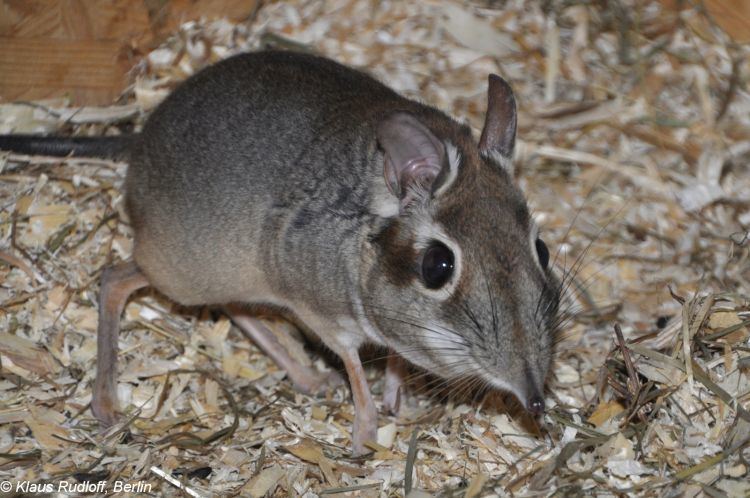 | ||
Genus Petrodromus
Peters, 1846 Similar Elephant shrew, Mammal, Elephantulus, Rhynchocyon, Short‑snouted elephant shrew | ||
The four-toed elephant shrew or four-toed sengi is the only living species in the genus Petrodromus, which together with three other extant genera Rhynchocyon, Macroscelides and Elephantulus constitutes the order Macroscelidea. This species is only found in particular regions in Africa and is smaller in size compared to its relatives. A comprehensive recording of this species is lacking.
Contents
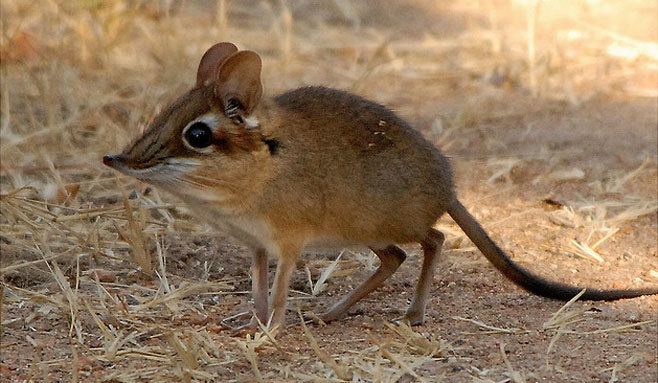
As its name suggests, the species has four toes on its hind feet, and like other elephant shrews, it has been named for its elephant-like, mobile proboscis.
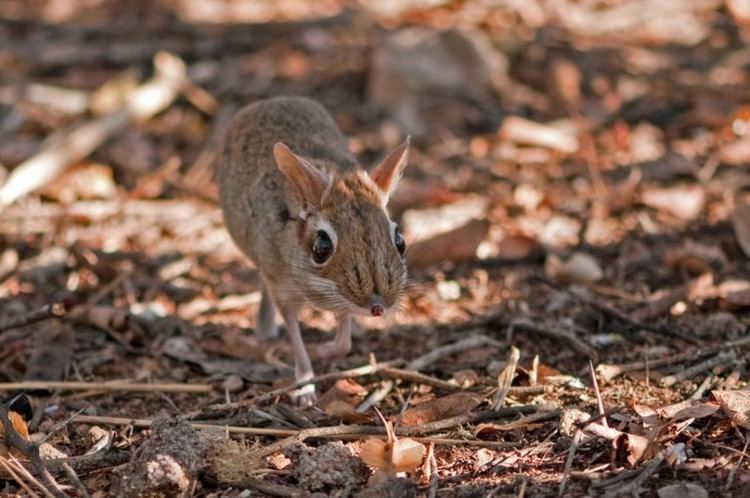
Geographic location and habitat
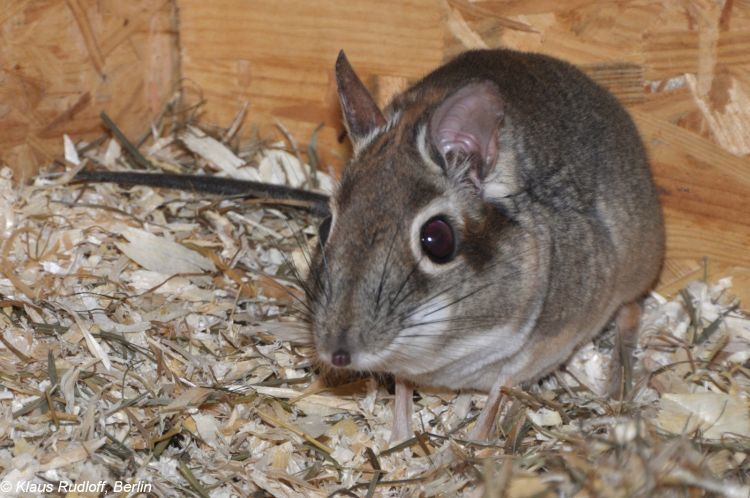
The four-toed elephant shrew is located in Central and Southern East Africa, notably in Angola, Democratic Republic of the Congo, Kenya, Malawi, Mozambique, South Africa, Tanzania, Zambia, Zimbabwe, and possibly Namibia. Its natural habitats are subtropical or tropical dry forests, montane forests, and moist savannas lowland forests. Throughout these countries, they are the second most widespread species, following the short-snouted elephant shrew.
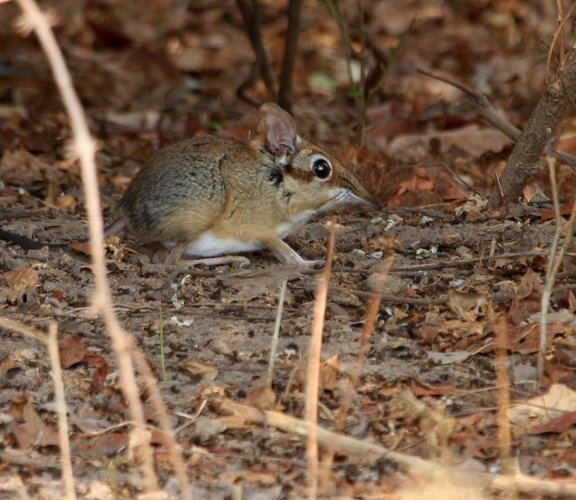
Specifically, they thrive in dense forests (notably in dense evergreen growths), woodlands and thickets, with suitable cover and protection, as well as invertebrates for food. In these areas, they are the second most common species. During the night, they prefer to sleep under dense brush (as opposed to a nest).

In some areas, their habitats are being destroyed and four-toed elephant shrews are being hunted, but their conservation status is of least concern.
Physical characteristics
A four-toed elephant shrew has long, soft fur and its color varies from greyish pale brown to dark brown with white rings around its eyes, and wide dark stripes on its back.
Markings of the four-toed elephant shrew vary in colour: the upper parts of its feet are brownish-yellow; its ears are dark brown, with pure white hair on the base of the inner margin; the tail is black on the upper side and pale yellow-brown on the underside, darkening in the middle and almost black at tip. The four-toed elephant shrew has a long, pointed, flexible and sensitive snout, which it uses to hunt. It also has short forelimbs and long back limbs.
The differences between the regular elephant shrew and the four-toed elephant shrew can be seen in facial features, body length and weight. Compared to the regular elephant shrew, which has small eyes and ears, a four-toed elephant shrew has broad, upstanding ears and large eyes. The elephant shrew generally varies in size from about 10 to 30 cm (3.9 - 11.8 in). However, the body length of the four-toed elephant shrew is less variable, 19 to 23 cm (7.5 - 9.0 in). Similarly, the tail length of the regular elephant shrew is 8.0 to 26.5 cm (3.2 - 10.4 in), while tail length of the four-toed species is 15.5 to 17 cm (6.0 - 6.7 in).
The elephant shrew is a small mammal weighing from 45 to 540 g (1.6 - 18.9 oz), while the four-toed elephant shrew is one of largest elephant shrews, weighing between 160 and 280 g (5.6 - 9.9 oz).
Behaviour
The four-toed elephant shrew is mostly active during the day and early evening, whereas during the night or midday, it tends to be less active. When the four-toed elephant shrew runs, its tail points upwards; it also makes a noise through its hind feet. Ants react to this sound, which helps the four-toed elephant shrew to locate its prey.
When four-toed elephant shrews fight, they usually fight in pairs of the same gender. They fight in a "boxing" motion, supporting themselves on their rear legs and boxing with their front limbs to tackle one another. Four-toed elephant shrews have good senses of sight, smell and hearing, but their vocal capacity is not well developed. In captivity, they make different kinds of sounds, such as screaming, purring or clucking for help.
Diet
Four-toed elephant shrews are heavily dependent on rich leaf litter composition for their food and nests. Their main prey are small invertebrates. Ants and termites are most common, as well as crickets, grasshoppers, spiders, centipedes, millipedes, and earthworms. Seeds, fruits, buds, and other plant material also form part of their diets. Four-toed elephant shrews eat much like anteaters; they flick small foods into their mouths.
Based on where these four-toed elephant shrews live, their main diets can vary. In Kenya, their diets include termites, plant matter, centipedes, ants, crickets and cockroaches, millipedes, spiders, and other similar creatures.
Some of the predators of the four-toed shrews are snakes, raptors, and carnivores, and in some cases, domestic cats.
Reproduction
Depending on the quality of the habitat, four-toed elephant shrews breed throughout the year, showing an increase in reproduction when more feeding grounds are accessible. The lowland forests and savannas offer shelter from the midday heat and resting places, as well as suitable birth places. Copulation typically occurs on land, and they are monogamous in nature. Their mating patterns involve sexual intercourse over several days, after which each mate returns to its solitary lifestyle. Gestation lasts between 40 and 60 days and one or two offspring are born. The young are born in a highly developed state and are weaned by their mothers after 15–25 days; the young reach full sexual maturity close to 50 days after birth.
